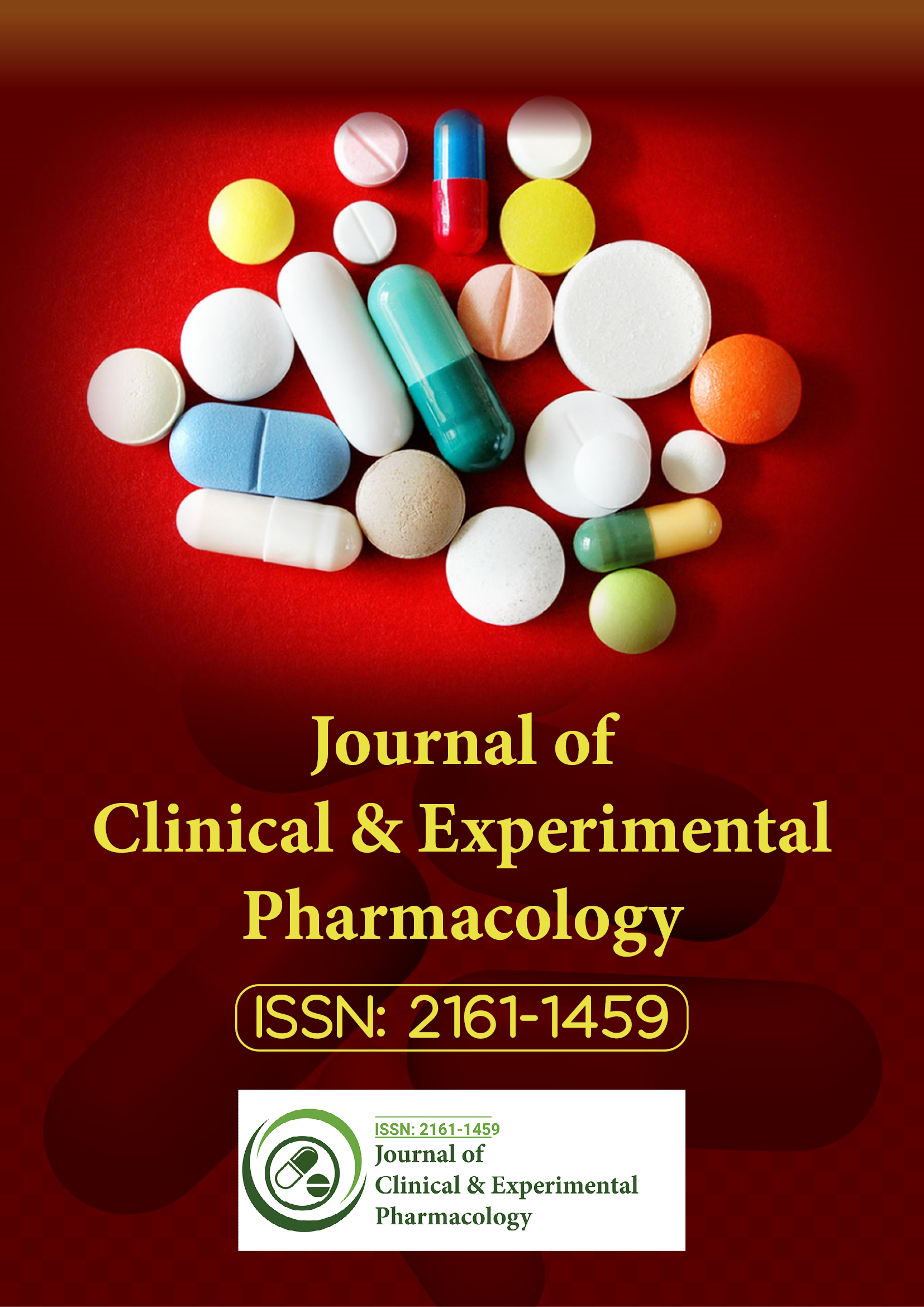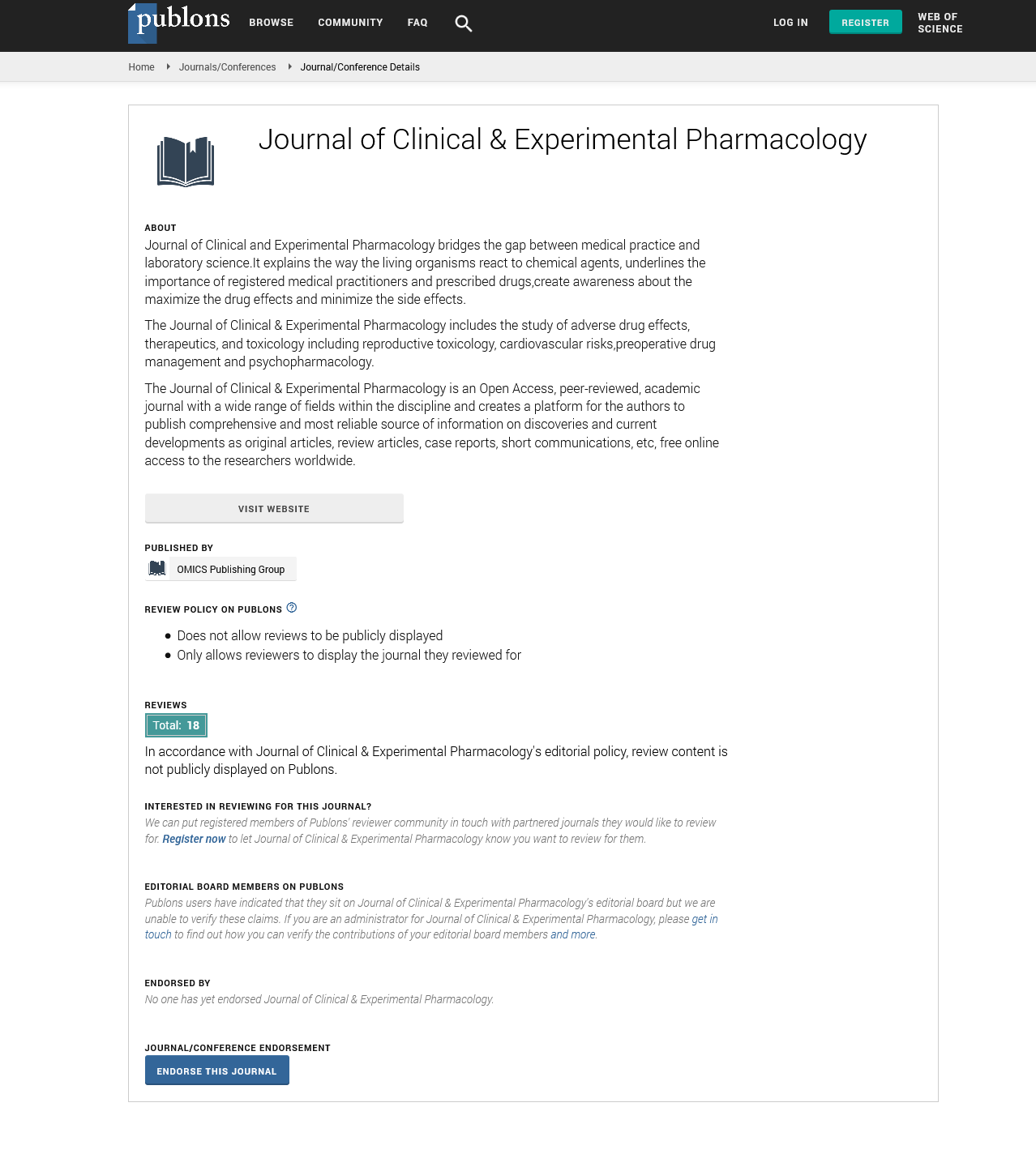Indexed In
- Open J Gate
- Genamics JournalSeek
- China National Knowledge Infrastructure (CNKI)
- Ulrich's Periodicals Directory
- RefSeek
- Hamdard University
- EBSCO A-Z
- OCLC- WorldCat
- Publons
- Google Scholar
Useful Links
Share This Page
Journal Flyer

Open Access Journals
- Agri and Aquaculture
- Biochemistry
- Bioinformatics & Systems Biology
- Business & Management
- Chemistry
- Clinical Sciences
- Engineering
- Food & Nutrition
- General Science
- Genetics & Molecular Biology
- Immunology & Microbiology
- Medical Sciences
- Neuroscience & Psychology
- Nursing & Health Care
- Pharmaceutical Sciences
Perspective - (2025) Volume 15, Issue 1
The Role of Pharmaceutical Form Selection in Drug Development Success
Rachel Klein*Received: 29-Jan-2025, Manuscript No. CPECR-25-28889; Editor assigned: 31-Jan-2025, Pre QC No. CPECR-25-28889 (PQ); Reviewed: 14-Feb-2025, QC No. CPECR-25-28889; Revised: 21-Feb-2025, Manuscript No. CPECR-25-28889 (R); Published: 28-Feb-2025, DOI: 10.35248/2161-1459.25.15.469
Description
Form selection in drug development plays a significant role in determining the success of pharmaceutical products. The choice of the drug form influences several fundamental factors, including pharmacokinetics, bioavailability, stability, manufacturability and regulatory approval. Traditionally, form selection has been driven by pharmaceutical chemistry, but as drug development has become more complex, an interdisciplinary approach is increasingly necessary. This integration of multiple scientific and regulatory fields spanning material science, pharmacokinetics, toxicology and clinical pharmacology ensures that the most suitable form is chosen, optimizing therapeutic outcomes and reducing the likelihood of late-stage failures.
Form selection traditionally began with identifying the most stable form of the Active Pharmaceutical Ingredient (API). Over time, the need for bioavailability enhancements and the growing complexity of the drug formulation landscape led to the exploration of various solid forms such as crystalline, amorphous, polymorphs, salts and co-crystals. Additionally, with advances in nanotechnology, lipid-based systems and formulations have also gained prominence. Each of these forms presents distinct advantages and challenges in terms of solubility, stability and manufacturing costs. Consequently, understanding the unique properties of each form, as well as their interactions with excipients and their ability to meet regulatory requirements, has become a fundamental aspect of drug development.
Pharmaceutical chemistry plays a foundational role in form selection, particularly in the context of API characterization. The molecular properties of the API such as solubility, crystal structure and stability greatly influence the choice of the drug form. Crystalline forms, for example, are often selected for their stability and reproducibility, whereas amorphous forms may be chosen to enhance solubility, particularly for poorly water-soluble drugs. Polymorphs and co-crystals provide a balance between stability and solubility, allowing for the fine-tuning of the drug’s properties.
Materials scientists use sophisticated techniques such as X-ray diffraction, thermal analysis and spectroscopy to investigate the physical properties of the drug and predict how different forms will behave under various conditions. These techniques allow scientists to make informed decisions about which form is most likely to optimize the drug’s performance in the body. The interdisciplinary nature of form selection becomes especially apparent when considering pharmacokinetics—the study of how the drug behaves in the body over time. The selected drug form must not only be stable but also bioavailable. This is particularly important for drugs with low aqueous solubility, where enhancing solubility becomes a priority to ensure adequate absorption from the gastrointestinal tract.
Amorphous drug forms often provide a solution to solubility challenges, as they tend to dissolve more rapidly than their crystalline counterparts. However, amorphous forms can be less stable, leading to the need for careful handling and storage. In contrast, crystalline forms provide greater stability, though their solubility can be limited unless specific polymorphs are selected. The decision on which form to use will, therefore, be guided by considerations of the API’s solubility, permeability and the intended route of administration.
Pharmacokinetic models can be employed to predict how various forms of the drug will behave once administered, providing insights into absorption rates, peak plasma concentrations and overall bioavailability. Such modeling also aids in determining the most appropriate dosage form—whether oral, injectable, or transdermal—ensuring that the drug reaches its target site in the correct amount and at the right time. While the benefits of certain forms, such as enhanced solubility or faster onset of action, are clear, they can also introduce new safety risks. For example, amorphous forms, while enhancing solubility, may also increase the rate of absorption, potentially leading to higher plasma concentrations that could pose toxicity risks. This is particularly true in drugs with a narrow therapeutic window.
Additionally, polymorphs of the same API can have different toxicological profiles. For instance, one polymorph may exhibit more favorable dissolution characteristics and better bioavailability, but it may also have a higher propensity for crystallization in vivo, potentially leading to undesired side effects or reduced therapeutic efficacy. Therefore, the safety profile of each form must be rigorously assessed through preclinical toxicology studies to identify any potential hazards and determine safe dosage levels.
In conclusion, the selection of the optimal drug form is an intricate and multifaceted process that requires input from a range of disciplines, including material science, pharmacokinetics, toxicology, regulatory affairs and clinical pharmacology. As drug development becomes more complex, needs for an interdisciplinary approach become increasingly evident. By integrating the expertise of professionals from diverse fields, the process of form selection can be optimized to ensure that drugs are not only effective and safe but also manufacturable and commercially viable. This collaborative approach ultimately results in more efficient drug development, better patient outcomes and improved therapeutic strategies.
Citation: Klein R (2025). The Role of Pharmaceutical Form Selection in Drug Development Success. J Clin Exp Pharmacol. 15:469.
Copyright: © 2025 Klein R. This is an open-access article distributed under the terms of the Creative Commons Attribution License, which permits unrestricted use, distribution and reproduction in any medium, provided the original author and source are credited.

